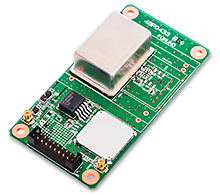Articles for ITS market Japan’s automated driving project "SIP-adus" will be a large demonstration experiment.
This year’s international conference of autonomous driving attracted 400 people from around the world.
The Japanese government is promoting the strategic innovation and creation program (abbreviated as SIP) as the core strategies growth and development for the next generation’s science and technology.
SIP has ten sectors, one of which is autonomous driving. The project name is called SIP-adus (automated driving for universal services). Many private enterprises including automobile manufacturers, automobile parts manufacturers, cartographer companies and educational institutions such as universities are cooperating with related administrative ministries and agencies.
The four relevant ministries and agencies are discussed below.
The Ministry of Land for infrastructure and transport of vehicles and roads, the Ministry of Economy for trade and commercial side of automotive industry, the National Police Agency for traffic laws and the Ministry of Internal Affairs and Communications for the vehicle's communication. It is the Cabinet Office who controls this industry-academia-government collaboration.
Since 2014, SIP-adus began research and development of cooperative areas that should be tackled jointly by industry, academia and government for autonomous driving. In addition, from 2016 they have been developing an intensive discussion and examination regarding the following five issues as very important technical topics. High precision 3D digital map (commonly known as dynamic map), Human machine interface (HMI), Information security corresponding to cyber security, Reduction of pedestrian accident and Next-generation urban transportation.
Also the Cabinet Office is holding a SIP-adus workshop every year in Tokyo as a place to discuss trends of SIP-adus to the world from 2014 to current. For the outline of the meeting it is stated as "an international conference to discuss tasks for sharing and solving issues with Europe, the US and Asia Pacific experts in order to realize the autonomous driving system."
Details of large demonstration was announced.
This year's workshop was held from 15th to 17th November and I covered the entire discussion onsite. The topic that attracted the most attention was the announcement and outline of large demonstration experiments to be implemented during the next fiscal year.
Accordingly, from the end of November 2016 to May 2017, the technical specification of the experiment will be summarized and it will be discussed by stakeholders. Registration for participation will be held around June 2017 and the verification experiment will be conducted for about two and a half years from September the same year until March 2019.
The area of the verification experiment is about 300km including the Tokyo capital highway, the Tomei and the new Tomei highway and a part of Joban expressway. Moreover there are general roads around the Tokyo coastal area and the simulated urban area test courses that are newly established within the Japan Automobile Research Institute in Ibaraki Prefecture.
Government-led demonstration experiments that use such public roads in a wide area are rare in the world. In the United States makes exceptions where the presence of fully automated Google car stands out. Local governments, such as California State and Arizona State, have responded to individual regulations concerning the autonomous driving.
In September this year, the US Department of Transportation just released guidelines for having a common recognition of autonomous driving in the United States however is still time consuming to coordinate with local administrations. Among them, the implementation of the autonomous driving demonstration, "smart city" will be held in Columbus, Ohio as a national project from next year. However, details are still undecided.
In addition in Europe, both British and Norwegian governments are showing a positive attitude towards the practical application of the autonomous driving. The large demonstration using Volvo's SUV will begin in Gothenburg City, Norway from next year. Also, in China, Baidu, Alibaba and Tencent which are major IT companies will conduct their own verification experiments. In collaboration with BMW and car manufactures in China but the actual situation is not yet disclosed.
Therefore at present it can be said that Japan's SIP-adus is an important step for leading the world in technical development concerning autonomous driving.
R & D of Japan's own V2X advances
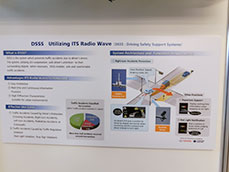 A system outline of V2X utilizing the 700 MHz band being processed by the National Police Agency.
A system outline of V2X utilizing the 700 MHz band being processed by the National Police Agency.
In Japan the spread of car navigation systems is the fastest growth in the world. Practical use of communication related to automobiles such as VICS of road traffic information system and ETC of charging system on expressway continues to advance.
Such fields have been called ITS (Intelligent Transport Systems) so far and Japan has taken a central role at the International Conference's ITS World Congress.
However, another kind of discussion in the ITS industry has been needed in recent years because the movement towards the practical application of the fully autonomous driving by the IT industry and startup companies in the US. Also the ride sharing system is expanding very rapidly. In fact even the SIP-adus, some European automotive manufactures and the US Department of Transportation mentioned "In the near future of the automotive industry, the uncertainty factors would be larger due to the influence of ride sharing".
Under these circumstances in order to upgrade the basic technology of ITS, that we have cultivated to the practical stage, Japan must strengthen the promotion of V2V (Vehicle to Vehicle Communication), V2I (Vehicle to Infrastructure Communication) and V2P (Vehicle to Pedestrian Communication).
In order to demonstrate such situations there was a booth at the poster session in the SIP-adus workshop and there were detailed descriptions, movies. And the devices used that actually concern the five important topics in the autonomous driving I mentioned above.
Specifically the 700 MHz band V2X that the Metropolitan Police has partnered with Toyota, DENSO and others. They will be collaborated with the Global Navigation Satellite System (GNSS) including the QZSS. This is what Toyota announced as "ITS Connect" in October 2015 and now are installing transmitter and receiver equipment in Tokyo, Nagoya and Toyota city and so on. In the case of the 700 MHz band, the Japanese government thinks that the radio wave is bigger than 5.8 GHz band and 5.9 GHz band used by Western countries and it is suitable for communication in urban areas surrounded by tall buildings. That is why SIP-adus will proceed with the Demonstration experiment aggressively.
Also the present state of a development was introduced in detail. It was the system that informs the cars position to a pedestrian's smartphone in the form of keeping the inter-vehicle communication by monitoring the traffic situation at the intersection with the 79 GHz radar conducted as it is operated by the Ministry of Internal Affairs and Communications.
After the completion of the SIP-adus demonstration experiment in March 2019, the Japanese government will be set to roll out a full-scale next generation V2X practical stage with the Tokyo Olympics and Paralympic Games.
Writer introduction

Mr. Kenji Momota Automotive journalist
His major is the world automotive industry and he is also familiar with the energy industry, IT and the aging society problem as the related fields. He acts around the world based in Japan and USA and writes for the general magazines, the technology journals and the automotive related media etc.
He is also commentator of motor race and world's motor show on TV program based on his career of the driver of Indy Racing League and NASCAR. In recent years, he has been covering about a paradigm shift from developed countries to developing countries, the motorized vehicle like EV and the telematics.
FURUNO ITS Journal
Click here for the latest articles after 2022 (in Japanese)2022
- The "realistic" self-driving roadmap shown by the Japanese government and a hands-on report on the latest Subaru EyeSight X
- Will FCVs (Fuel Cell Vehicles) Become Popular? ~New Movement in Toyota and Honda~
- The 'Complete' online sales of new cars start in Japan. Will this new way of buying cars take root?
- Many Firsts! On-Site Report from Tokyo Auto Salon 2022 - The author, who knows what goes on behind the scenes, looks back on 40 years of history. -
2021
- "Moving toward zero traffic fatalities for four-wheeled and two-wheeled vehicles globally in 2050" ~Experience on Honda's latest safety technologies~
- Tsuneishi Shipbuilding's building and DX, an exclusive visit to the main factory
- Japan's Smart City: New Moves toward Practical Use
- When will self-driving buses (service cars) be put to "full-scale" practical use?
- Utilization vehicle data during disasters
- Toyota-led Connected Technology to Transform Commercial Vehicle Business -From light trucks to large trucks and buses-
- Toyota enters the connected car "Personalization" business
- Japanese automakers' carbon-neutral strategies swept up in ESG investment
- Drive experience of the latest autonomous vehicle models and advanced driving support systems
- Will carbon neutrality accelerate the trend to strengthen LCA (Life Cycle Assessment)?
- Semiconductor shortage exposes realities of the automotive industry
- Online Autonomous Driving Contest Enhancing development of Human Resources
2020
- What happens to CASE when gas cars are banned in Japan?
- When will Flying Cars be launched?
- Expectation vs. reality:Autonomous Driving in Japan
- V2X, Becoming increasingly important in autonomous driving
- Technology of Subaru “EyeSight X”
- Lifestyle-oriented French cars gain popularity in Japan
- Human-oriented smart cities are wanted
- MaaS and CASE, how would automotive industry change after COVID-19?
- The beginning of virtualization era, triggered by COVID-19
- Trend of EV shift and consumer demands
- TOYOTA Press conference about ADAS - Releasing algorithm for "sudden acceleration suppression during attempted sudden acceleration" free of charge -
- The Japanese automotive industry in 2020 - 3 turning points -
- "Using a smartphone while driving" and "Level 3 automated driving"
2019
- Motor show business model is at a turning point - Tokyo Motor Show Report -
- Commercialization and monetization of MaaS - ITS World Congress Singapore Report -
- Android Automotive pays attention to V2X - Report from the Frankfurt Motor Show 2019 in Germany -
- Automobile Distribution Revolution and DCM (Data Communication Module)
- Connected business potential and newly proposed "eMaaS" by Honda
- 5G services for practical use are multiplying
- Connectivity technologies attracting attention due to frequent traffic accidents
- Shanghai Motor Show report -SUV, EV, Automated car & 5G-
- Drone Business roadmap and updates to Michibiki (Quasi-Zenith Satellite System)
- MaaS (Mobility as a Service) "town development." Full-scale promotion for a national project
- CES organizer states "Data Period in 2020s." Transformation of the Automotive Industry in CES, US "-CES2019 Report-"
- "Return to Origin" directed towards the age of change, automatic operation and connectivity
2018
- New proposal for Private Car Automated Driving Level and other Hot 5G Technology Topics
- Standardized EV charging infrastructure concerns in Europe, US, Japan and China - Kobe EVS 31 field report -
- Touring a pure car carrier and a test drive of the latest hybrid car
- Planning stage products are exhibited at the newly established visualized mobility service "TOYOTA MOBILITY SHOWROOM".
- Potential “Community Car-share” program promoted by local residents
- CES Asia Report 2108
- Companies attempt new Vehicle-to-Infrastructure communications, including traffic volume measurements and vehicle positioning. -ITS Asia Pacific Forum in Fukuoka-
- Geneva show in Switzerland. Flying cars and MaaS (Mobility as a Service) were hot topics.
- EV (Electric Vehicle) proposals by country
- MaaS competition through service mobilization, M & A and technical field collaboration is accelerating. - The CES 2018 Report -
2017
- Big data’s initiative and fight for the automotive industry. Cooperation among companies becomes increasingly important.
- Connected car and road-to-vehicle communication automatic operation
- ETC (Electronic Toll Collection) and ETC2.0. Current situation and projected future
- Rapid development of sharing economy
- Germany is first to recognize level 3 automated driving
- ITS EU 2017 Field Reports -Automatic Operation and the eCall-
- From Infotainment to ITS, the competitive area is spreading in the car big data industry.
- GTC (GPU Technology Conference) Report and the de facto standardization of AI (artificial intelligence)
- Renesas' new challenge! "e-AI Solution" and "Renesas Autonomy"
- The Automobile industry is shifting from a manufacturing industry to a service industry.
- The movement toward accident countermeasures for aging drivers in Japan
- Fusion of ride sharing and fully automated driving is advancing in the USA.
2016
- Overview of the Quasi-Zenith Satellite System (QZSS) and advancements toward full-scale practical use including the Tokyo Olympic Games - G-space EXPO 2016 report-
- Japan’s automated driving project "SIP-adus" will be a large demonstration experiment.
- The International Home Care & Rehabilitation Exhibition. There were many car manufactures with exhibits booths at this show.
- Japanese car manufacturers starting to concentrate on strengthening the ADAS system
- A new movement of legislation for autonomous cars
- Cyber Security and “AGL”, the new OS for automotive are hot topics in the connected car industry
- “High precision 3D map” the key future of autonomous car and pedestrian dead reckoning
- Chinese “BAT” is accelerating their business in the EV (Electric Vehicle) market
- Tesla's original connection to Taiwan and the new transportation system technologies.
- "The main topic" of the Geneva Motor Show was how to strengthen "pedestrian protection"
- The probe data business is getting more competitive
- Reporting directly from the 2016 CES show "Data services will soon become the main revenue source of automotive industry"
2015
- Do the automated driving systems need the GNSS (Global Navigation Satellite System) ?
- ETC Version 2.0 is coming soon. A new service was announced at the Tokyo Motor Show and the possibility that is could be used as a device for older drivers.
- "Connected Horizon" and "eHorizon". Germany's leading parts supplier accelerates strengthening of "Big Data" for business



 It was the third time that the workshop has been held. There were about 400 participants.
It was the third time that the workshop has been held. There were about 400 participants. Stakeholders who took part the events such as Japanese government officials and invited foreign visitors.
Stakeholders who took part the events such as Japanese government officials and invited foreign visitors. Mitsubishi Electric's exhibition. Devices equipped with the latest updates for high precision map creation.
Mitsubishi Electric's exhibition. Devices equipped with the latest updates for high precision map creation. The SIP demonstration test will be conducted in the Tokyo capital highway, the new Tomei highway and a part of Joban expressway and the Tokyo coastal area.
The SIP demonstration test will be conducted in the Tokyo capital highway, the new Tomei highway and a part of Joban expressway and the Tokyo coastal area. A schematic diagram of the experimental facility for the autonomous driving newly established at the Japan Automobile Research Institute in Ibaraki prefecture.
A schematic diagram of the experimental facility for the autonomous driving newly established at the Japan Automobile Research Institute in Ibaraki prefecture.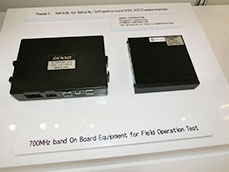 DENSO's 700 MHz band V2X equipment.
DENSO's 700 MHz band V2X equipment.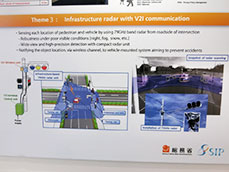 A monitoring system for intersections using the 79 GHz band that the Ministry of Internal Affairs and Communications is processing.
A monitoring system for intersections using the 79 GHz band that the Ministry of Internal Affairs and Communications is processing.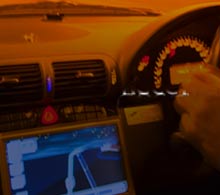 GPS/GNSS Receiver&Chips and Modules (positioning and timing)
GPS/GNSS Receiver&Chips and Modules (positioning and timing)